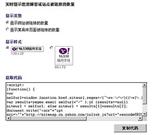Yahoo Site Explorer Launches
As the brand of Yahoo Search improves and the number of users increases, more and more webmasters are beginning to pay attention to how their sites perform on Yahoo Search. From daily query logs, a large number of webmasters use advanced search commands to check the number of pages indexed by the search engine and the number of links (inlinks) from other websites pointing to their own site. To better meet the needs of webmasters for building and promoting their sites, the Chinese version of Yahoo Site Explorer was officially launched on May 21st.
The Site Explorer is one of the series of tools offered by Yahoo Search for webmasters. On this basis, we will gradually establish a platform for communication and interaction between search engines and webmasters. Yahoo Search hopes that through this platform, information within the search engine can be moderately disclosed and made transparent, helping webmasters better understand the operation of search engines, systematically improve the quality of their sites, and at the same time increase the number of pages indexed by search engines, thereby improving the experience of Chinese language searches together. Currently, the Yahoo Site Explorer includes the following main functions:
1. Query the number of pages indexed by the search engine and the number of links from other websites.
If you want to know how many pages of a certain website have been indexed by the search engine, you just need to log in and input the URL you want to query. For example, after entering http://ysearchblog.cn and searching, it will display relevant information about the pages indexed by Yahoo Search.
If you also want to know which webpages link to that website, simply click on "Webpages linking to this address," and you can see the webpages linking to that domain, including both internal links from the site itself and external links from other sites.
Many webmaster friends know that the number of pages indexed by the search engine and the number of external links both affect the ranking of their website in search results. Therefore, flexible use of this function can help webmasters understand whether their website is popular with users and how it performs in the search engine. (Tip: Since Yahoo Search currently covers billions of Simplified Chinese webpages, the link relationships found using the Yahoo Site Explorer are relatively objective and apply universally to any search engine.)
In addition, you can bookmark the websites you care about in the Yahoo Site Explorer and check their indexing status and link status at any time. If you manage multiple websites, this feature will make your work easier.
2. Manage the content indexed by the search engine
If you wish to manage the content indexed by the search engine for your site, you need to go through our identity verification process. There are two ways to verify: file verification and Meta tag verification (as shown in the figure).
After passing the verification, you can submit your site's Sitemap, RSS, or URL list in the management interface to guide our crawler (named Slurp) to comprehensively and deeply crawl your site. At the same time, you can always check the progress of how your site is being processed by the search engine here.
If there is content on your site that you do not want to appear in the search engine, you can also use the management tool to remove them from our index. The content to be removed can be a specific URL, a directory, or the entire site. When you need to make them appear in the search results again, you can restore them by "undoing the deletion." However, please note that deleting data may be a quick process, but restoring it may take a long time because they need to wait for Slurp to recrawl and rebuild from billions of webpages.
3. Add a Link Index Icon to your site
The Link Index Icon is a mini Widget we created for webmasters using this tool. Just obtain a piece of JS code and add it to your website, and it will display the number of links from other webpages pointing to your page.




